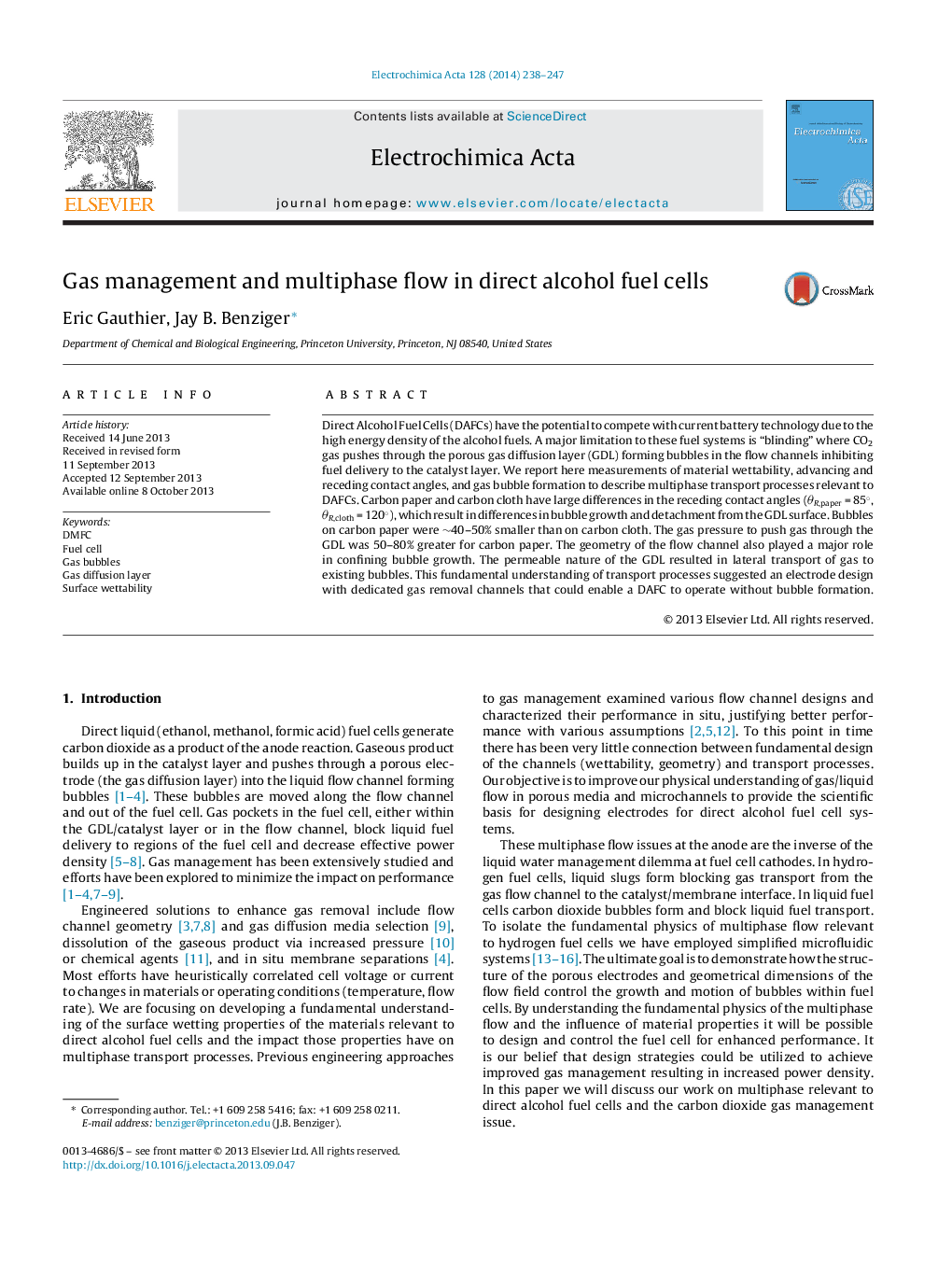| Article ID | Journal | Published Year | Pages | File Type |
|---|---|---|---|---|
| 186096 | Electrochimica Acta | 2014 | 10 Pages |
•Bubble formation is dependent on pore size and the receding contact angle of the GDL.•Larger bubbles form on carbon cloth than carbon paper GDL due to different wettability.•Gas flows laterally through the porous GDL to existing large bubbles.•Fuel cell performance is reduced by large bubbles in the flow channel.•Gas may be collected in dedicated channels creating a ‘bubble-free’ flow field design.
Direct Alcohol Fuel Cells (DAFCs) have the potential to compete with current battery technology due to the high energy density of the alcohol fuels. A major limitation to these fuel systems is “blinding” where CO2 gas pushes through the porous gas diffusion layer (GDL) forming bubbles in the flow channels inhibiting fuel delivery to the catalyst layer. We report here measurements of material wettability, advancing and receding contact angles, and gas bubble formation to describe multiphase transport processes relevant to DAFCs. Carbon paper and carbon cloth have large differences in the receding contact angles (θR,paper = 85°, θR,cloth = 120°), which result in differences in bubble growth and detachment from the GDL surface. Bubbles on carbon paper were ∼40–50% smaller than on carbon cloth. The gas pressure to push gas through the GDL was 50–80% greater for carbon paper. The geometry of the flow channel also played a major role in confining bubble growth. The permeable nature of the GDL resulted in lateral transport of gas to existing bubbles. This fundamental understanding of transport processes suggested an electrode design with dedicated gas removal channels that could enable a DAFC to operate without bubble formation.
Graphical abstractFigure optionsDownload full-size imageDownload as PowerPoint slide
